Diablo IV Review
PC
The core content of Diablo IV is good, and there's a lot of fun if you're an ARPG fan. But there's still much room for further improvements.
Reviewed by RON on Jun 08, 2023
Over the years, the Diablo franchise has significantly expanded, becoming one of the video game industry's most successful debuts. So reviving the Diablo series became essential since several attempts were made to replace Blizzard in the ARPG genre, but none were as successful as Diablo.
Diablo IV arrived eleven years after the release of Diablo III, and just like its predecessors, this installment also centers around character customization at its core. Each game has emphasized online play, characters, grim stories, and stunning visuals.

However, Diablo IV stays between a bit of traversing to something new and the old ways. Diablo IV includes almost everything; we are witnessing a truly remarkable experience. In terms of both the variety of its environments and the cinematic experiences it provides throughout its narrative.
These different ways of looking at it add up to a fourth installment of the popular Blizzard franchise that gives fans what they want while also being accessible to newcomers. Diablo IV is the largest installment in the series to date. The campaign can feel a little stale when played solo, but the real payoff is saved for the end.
Diablo IV is an ARPG game, so you probably know what to anticipate from it. Character creation involves selecting from five different classes (Barbarian, Rogue, Sorcerer, Necromancer, and Druid) and adjusting some of their attributes. Choose between the Adventurer and Veteran modes (World Tier 1 and 2) while making your character dive into its vast world. Despite my beginnings in Veteran mode, I recommend Diablo's Adventurer setting for anyone unfamiliar with the game.
The game provides detailed instructions on how to progress through the story and interact with the world at large. Diablo IV's primary story begins in the icy region known as Fractured Peaks, and after a brief prologue, you'll find yourself in the game's central city, Kyovashad.
Kyovashad is the game hub, where you can access most of the game's shops, quest givers, and crafting and upgrading systems. The primary plot quest splits into three paths, each with unique objectives, although you'll eventually complete all to unlock the zone's endgame content.
In Diablo IV, you'll explore a sanctuary that serves as a setting for the game, learning about its origins and nature, as well as the true nature of the events unfolding there and your role in them. All of the story's characters have distinctive and engaging voices, and they are some of the most engaging aspects of the story. While the story is well-told and moves at a good clip, I felt that several of the characters could have benefited from greater development.
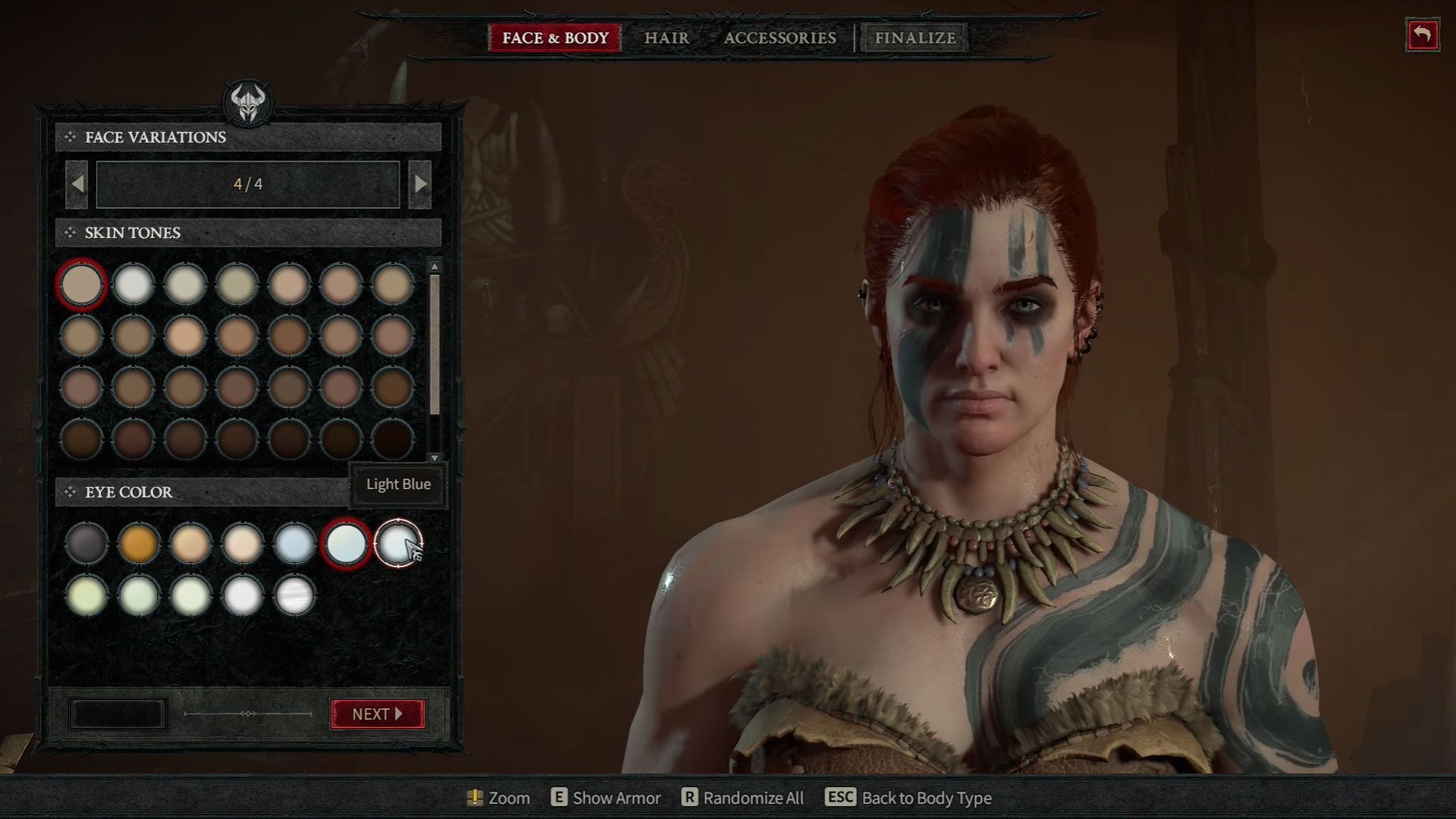
It lacked the punch of previous Diablo games, maybe because Blizzard intended this to be the beginning of a much longer story that will continue after you complete the main campaign. This feels more like an introduction to the sanctuary than the culmination of a story arc, and it's anyone's guess as to where the tale will go from here. However, it appears to have been designed for regular content updates. Many of the game's main characters weren't included, but they'll likely show up in future Diablo IV updates or DLC.
Diablo IV's Class balance is off, especially while leveling, even though this isn't hugely important in the grand scheme of things. If you're used to playing with a Rogue or Sorcerer, switching to a Barbarian or Druid at the beginning of a game will feel dreadful.
They supposedly all get incredibly powerful by the end game, but it would be wonderful if they seemed more capable earlier. Despite your character class, once you reach Tier 4 and obtain some decent gear. However, the game no longer appears challenging, and every quest can be completed relatively quickly.
World Tier 4 is the hardest difficulty, and once you've gotten all your gears and figured out the controls, the game becomes really simple to play for the rest of its duration. The Nightmare Dungeons are the only exception to this rule; as you go through the game, you'll earn higher-level keys that unlock ever more difficult tiers of enemies.
Although progress is limited, it continues indefinitely up to a certain threshold. Even the highest-level Nightmare Dungeons won't seem too daunting once you've reached level 100, unlocked all your best gear slots, and rolled the finest possible dice.
The main objective in Diablo IV continues from one moment to the next, and you're also free to roam the open world as you like. The game features a vast open-world map with seamless transitions between zones, and you'll travel to different biomes to discover numerous sites of interest and activities. There are five unique areas to explore. Each zone features its own set of monsters and quests based on real-world locations.
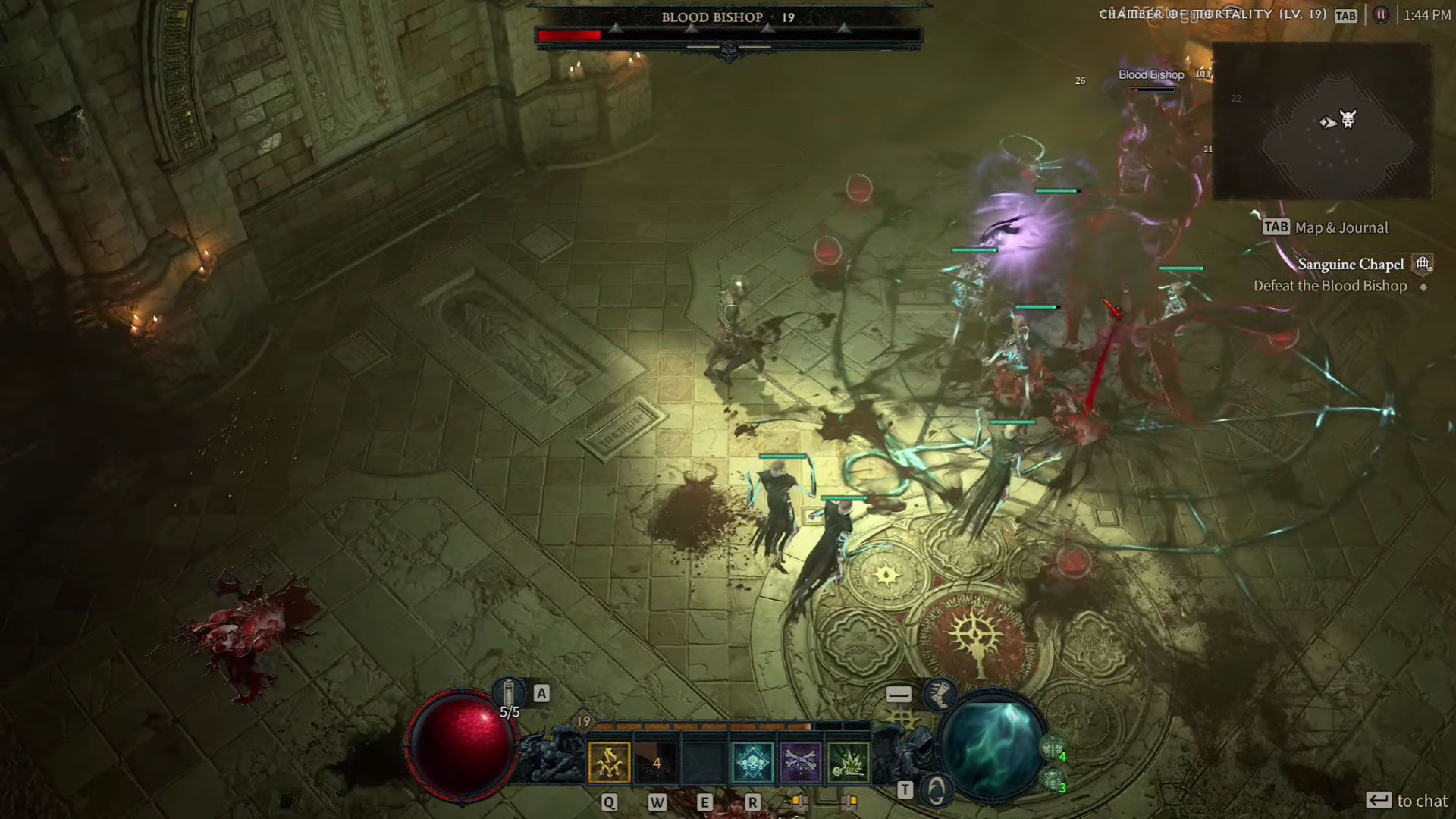
One of this game's best parts is the opportunity to look at and discover new items. The open world is not just big but enormous. Clearing the entire map will need a lot of time and exploration. It's huge, has lots of space, and is packed with captivating sights. The overworld not only contains a wide variety of enemies to stomp on but also dungeons, events, fortresses, side quests, and collectibles.
Consequently, when you play through the campaign, and it leads you through each zone, directing you to different places, you will discover and engage with what you will come across in the open world rather naturally. Mounts can be obtained through a side quest between levels 35~40. Given the game's scope and the environment, the mounts are an invaluable resource.
They can gallop at a normal pace and briefly increase their speed with a dash. Each class also has its unique dismount attack, and its three charges are constantly replenished over time. The main storyline may be completed in about 11 hours, but the game's vast open world will keep you busy for over 50, even 80 or 100. Even if you complete all the open-world activities as you go through the game, the true fun begins once the main campaign actually ends.
The Tree of Whispers is the game's first major system. These objectives appear in different parts of the world and across different time zones on a regular basis. There will be a fixed number of favors associated with each task. Return to the tree after accumulating ten favors to receive your reward.
This mechanism, which at first glance may look like a daily quest or the bounty system in Diablo III, actually encourages you to return to previously explored places and discover brand-new ones. These goals almost usually come together in groups, and if you pick a small subset of each zone, you can see how certain actions are clustered together.
Consequently, you'll have to do things like finish a dungeon, clear a seller, kill a bunch of different enemies, hand in these collectibles, and then finish an open-world event. Although the specifics of the offered activities are always shifting, the places and types of activities provided change regularly. There may be several clusters active at any given time.
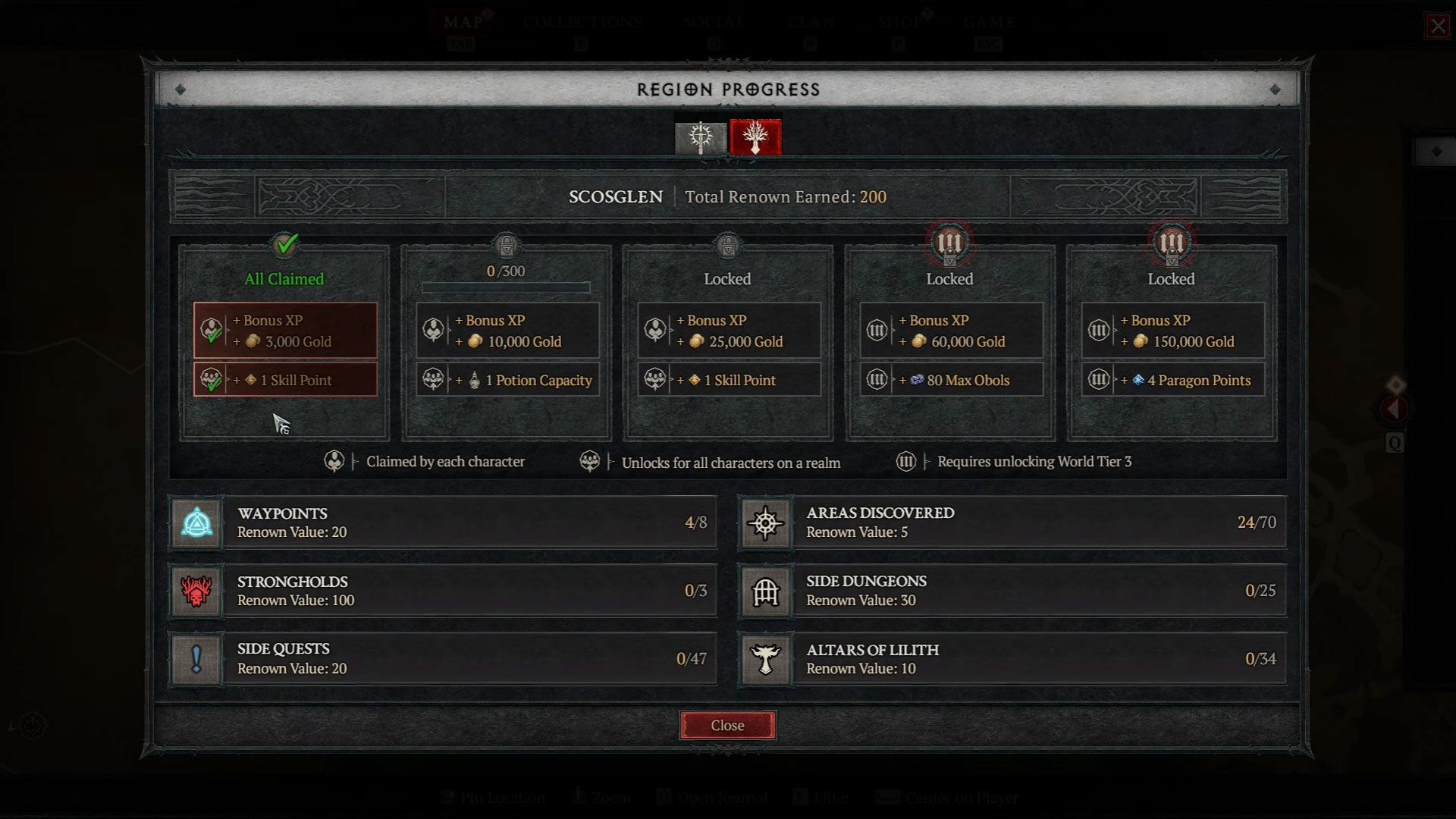
Each subset of the Tree of Whispers quest follows a similar outline, with more favor being awarded for more difficult tasks. One favor is awarded for clearing a vendor, five for completing a dungeon, and so on; after you've amassed ten, you can claim your reward from the tree. This is a great way to gain XP and levels, explore new areas, and complete low-level quests.
Despite its similarities to a daily quest or bounty system, this is the most efficient way to gain experience and fill in low-level treasure gaps. After completing the main storyline, visiting the Tree of Whispers is the only thing left. The rest is only accessible after completing the Capstone Dungeon, part of World Tier 3. Therefore, the last Dungeon is the fixed-level challenge that impedes your advancement through the World Tiers.
Defeating enemies inside is challenging, especially if you're well below their locked levels. The level cap for the World Tier 2–3 Capstone Dungeon is 50, and if you enter before then, you won't be able to deal enough damage to the bosses and will die fast. The length of the Capstone Dungeon actually exceeds that of standard dungeons. There are some special enemies to face off against inside, but otherwise, it's rather simple and mostly serves as a gear or level check.
Compared to earlier dungeon runs, Capstone Dungeon offered no unique surprises or mechanics. It's only that sometimes the opponents form a very formidable combination. The boss fight, though, is just as engaging as the rest of Diablo IV's. The campaign's major and Capstone Dungeon's final bosses are impressive with their character and mechanism designs.
World Tier 3 is accessible once you have completed the Capstone Dungeon of World Tier 2. This unlocks the remainder of the endgame, including the Nightmare Dungeon and Helltide and the introduction of the Champion Monsters, who feature unique resistances and affixes that can prove difficult to overcome.
Drops of rare and unique items will also increase at this time. The unique items are completely different from the rest of the game, whereas sacred items are like higher-level copies of anything below legendary. The types and affixes of the set of stone stays that they drop will vary according to the item level. Some of these rare items drop with impressive bonuses.
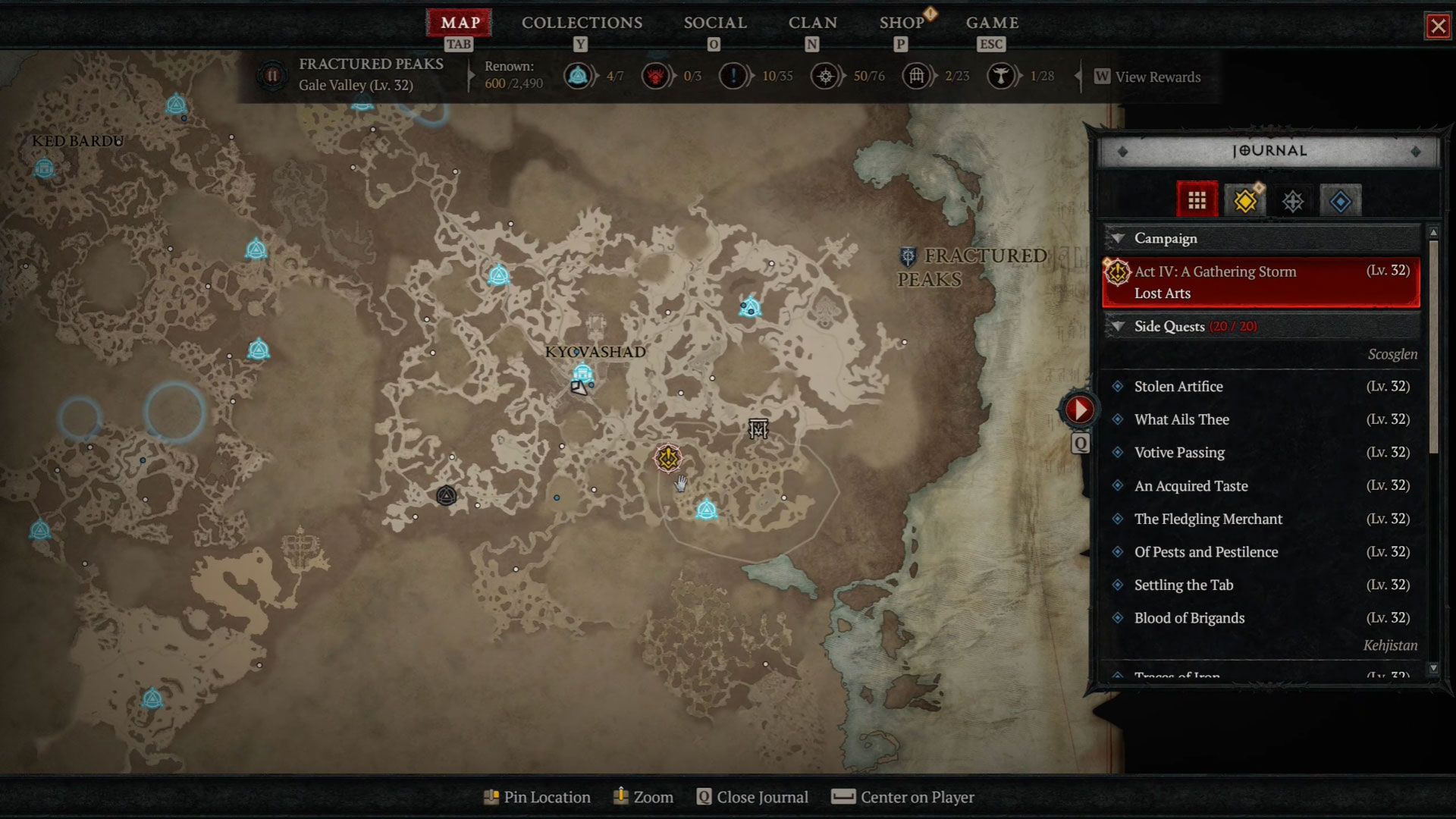
So, in World Tier 3, you can expect better loot drops, more challenging enemies, and more overall content. At this moment, it felt like the game was just beginning to open up, with fighting becoming much more interesting as it became more challenging due to the introduction of additional activities.
The Helltides are yet another of these events. Every hour and a half, Helltides switch on and off, affecting a sizable portion of two of the five main regions of the game. The entire region becomes reddish when it happens, looking like hellfire is falling. Sometimes, this is a real mechanic, so watch out for it as it falls! Cinders are a resource that is dropped by the Helltide enemies.
This allows you to farm monsters, complete events, and take down bosses. There are bosses in these zones exclusive to Helltide that only appear here. All of this earns you Cinders, which you should collect as much of as possible in the allotted time. Then, you can use those Cinders at the chests strewn across the Helltides, where you can find various weapons, armor, rings, and amulets.
When you hand in your Cinders, the chest will give you a random drop of the specified type. When you turn in the necessary number of Cinders for a given chest, you will receive a random drop regardless of how many Cinders you turned in. There is a chance that these will drop legendary or better items. And if you want to turn in a specific piece of legendary or sacred equipment for your build, Helltides is a fantastic option.
You simply have to locate the correct Helltide chest. If you're very fortunate, you may find yourself at a location that is both parts of Helltides and contains a Tree of Whisper quest. In this scenario, the value of farming in that area is exceptionally high for obvious reasons. When all of these factors coincide, it's a fantastic time to farm a ton of items.
Diablo IV's end game revolves primarily around the Nightmare Dungeons. The level of difficulty of this activity steadily rises as you progress, with more and higher Sigils serving as keys to the Nightmare Dungeons. As a result, the maximum level a character may attain is now well above 100, and the level cap for enemies is also rising. As you gain experience, levels, and weapons, this will be the level of challenge you take on next.
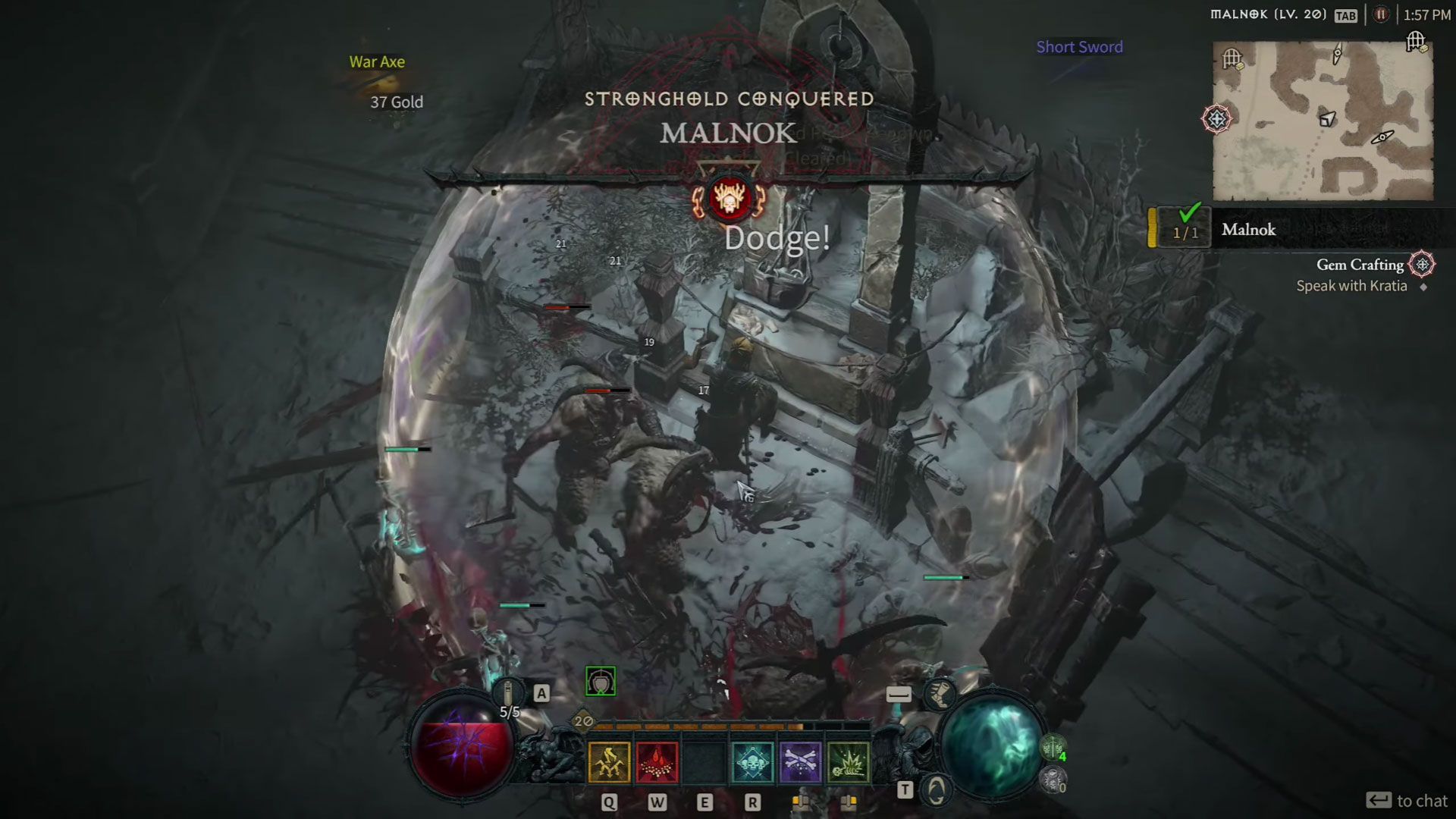
The primary focus shifts to clearing higher-level Nightmare Dungeons. You will receive random low-level Sigils when you reach World Tier 3. With this, you can enter a nightmare version of a specific dungeon. Therefore, the nightmare varieties will enhance the base experience with an array of new parameters. Your character receives a buff that improves their performance by increasing their attack speed or a certain type of damage.
Sometimes, it even fortifies you, making you more resistant to harm. The foes, however, will receive additional boosts that will make them stronger and more damaging. Often, this involves having them burst upon death or leaving pools of damage behind.
The most intriguing aspect, though, is the fact that these can occasionally introduce a new dungeon mechanic. This category includes effects like the drifting shade, in which a little shadow follows you and explodes when it reaches them, dealing damage and spawning a daze field if the player steps into it.
In addition, a pillar of rock will always trail close behind you, dealing out a burst of damage each time it approaches. Some of them have portals that are always open and pouring in more monsters, while others have occasional lightning strikes that necessitate sheltering behind a floating item. The primary goal of clearing out these Nightmare Dungeons is to earn better Glyphs for your Paragon Boards, not the random drops of loot at the end.
You will no longer acquire levels once you reach level 50 and begin processing the Paragon Board. So, for each level, you gain four additional Paragon points. This Board adds a new dimension to a character's power outside of equipment. Your first stop is the class's first Board. Nothing can change this arrangement; progress is made sequentially from the base up.
A large number of normal nodes will grant modest improvements to characteristics like strength, intelligence, willpower, or dexterity, and a smaller number of magic nodes will provide more substantial increases to these characteristics. Legendary nodes are extremely rare and deliver the game's strongest bonuses. These are essentially like extra pieces of equipment, as they grant an advantage compared to a legendary trait.
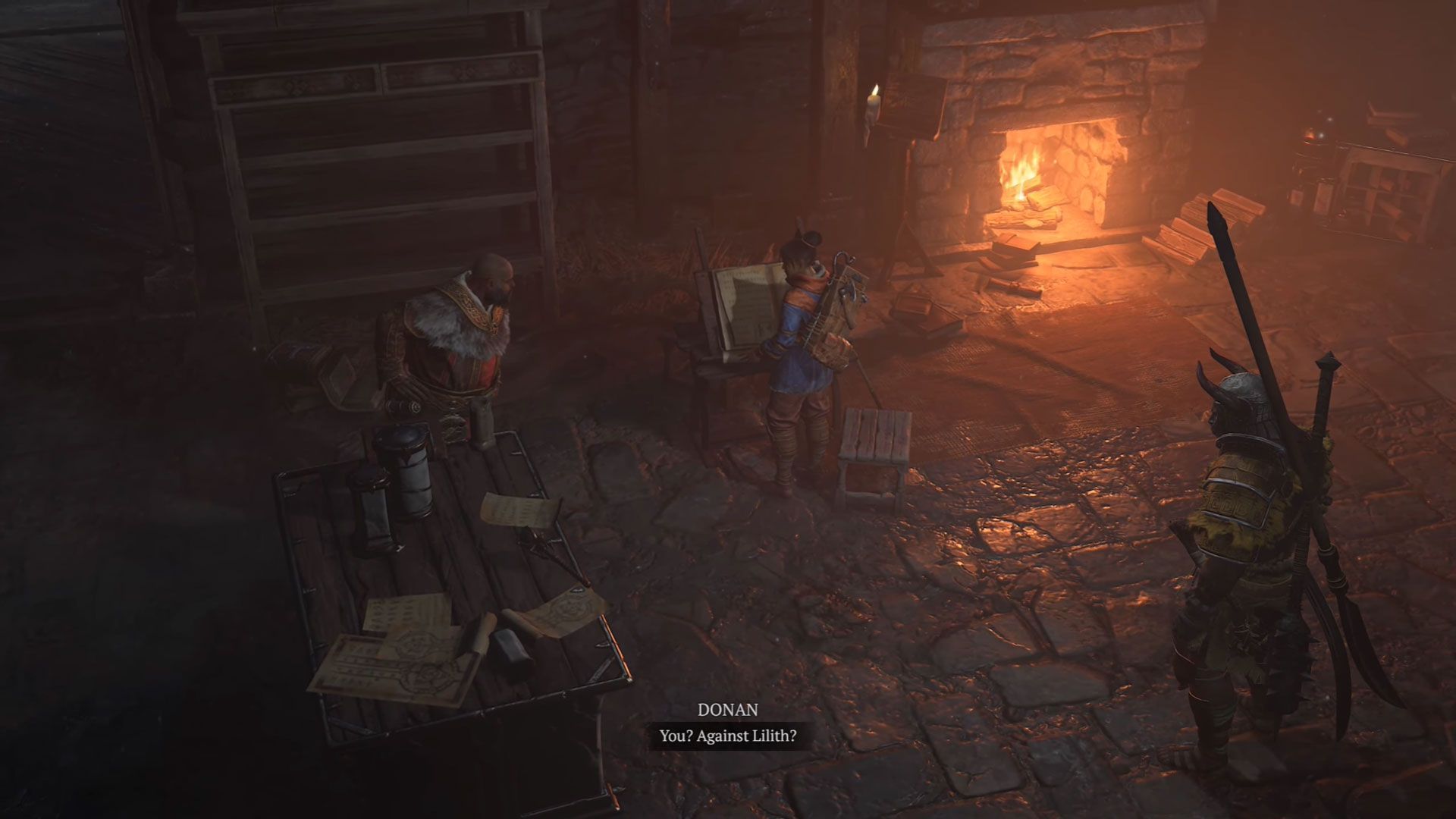
These boards are littered with empty spots for Glyphs. Glyphs become more common as you play, adding significant bonuses to any nodes within their range. Each of your Glyphs has its unique effect, and if you find one that goes well with your build, you can place it in a free glyph node on the Paragon Board to greatly improve the effectiveness of all of the nodes around it.
These improvements are substantial, after all. As was previously indicated, completing those Nightmare Dungeons will grant them additional power. After finding a Glyph you enjoy using that complements your build, you may wish to devote time to farming the Nightmare Dungeons to increase the Glyph's level. Running Nightmare Dungeons in Diablo IV is analogous to running Rifts in Diablo III, except that you're leveling Paragon Glyphs instead of leveling gems.
If you were part of the open beta for Diablo IV, you already know what the world bosses are like. The world boss appears at regular intervals. You'll have 15 minutes to prepare before they arrive, and then it'll be time to fight the boss and take your loot. In Diablo IV, you'll face off against three different World Bosses: Ashava, the Pestilent, Avarice, the Gold Cursed, Wandering Death, and Death Given Life. Every one of them is situated in a separate area.
They all have a comparatively brief Spawn Time, and you will receive alerts 15 minutes before a World Boss spawns, as is standard for all World Bosses. Avarice, the Gold Cursed, has a wide array of melee, slam, and AOE strikes.
You'd have to avoid the puke he'd stomp out on the floor. Occasionally, he would teleport out of the arena and then slam back in when he returned. Sometimes, he will burst into these golden AOE pools, which he helps build around himself. This boss is the most simplistic and uninteresting of the game's other bosses.
However, Wandering Death, Death Given Life, has a sound wave attack that involves sending out a blast and pulling it back to him to damage anything in its path. He calls upon mighty twisters that whirl the arena in their path. As he spins, he charges up a beam attack and fires it out of both hands.
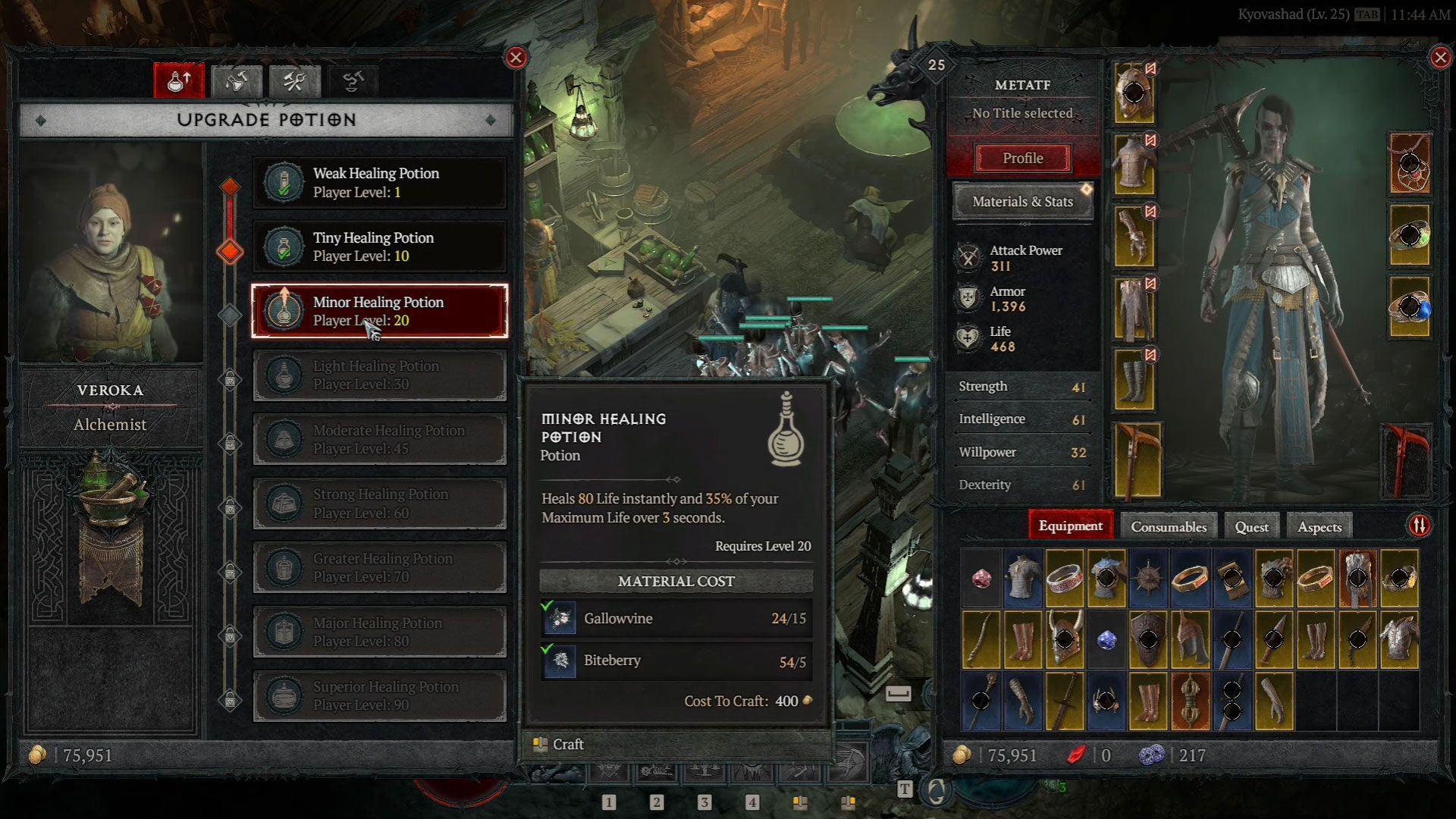
The intensity of this situation grows until the boss unleashes a barrage of three-beam assaults. Ashava, the Pestilent, is a monstrous creature with sabers on its forearms that are capable of slicing through anything. Ashava can poison the ground, and that's about it. None of the world bosses appeared to be particularly difficult compared to the game's general enemy mechanics.
Even though there are some engaging boss battles, they are all quite straightforward and lack any true difficulty. It's incredibly frustrating that neither the campaign nor the world bosses are particularly challenging, as was the case with the bosses in the Capstone Dungeon. Some of these actions, while fascinating, lacked the spark of originality and inspiration that I was hoping for.
The majority of the game's bosses resembled their Diablo III counterparts, albeit with minor tweaks. While I enjoy playing the game's main mechanics, I can't help but feel that Blizzard took the easy way out by merely creating a solid action role-playing game and didn't do anything to innovate beyond that.
The Fields of Hatred, Diablo IV's equivalent of player versus player zones, is the game's final major endgame action. These are the game's unique currency for PVP battles, and they're directly linked to your Grim Favors. The reward for defeating other players is all their loot, and the PVP boss is five Grim Favors.
If you turn in and it is part of the quest to actually turn in any Seeds of Hatred, you will get three Grim Favors. You can collect your reward after completing ten favors. Unless you've partnered with others to repeatedly roll up dungeons, PVP is the quickest way to accomplish your Grim Favors.
When you have your seed, you can trade in any amount. You need to go to the Altar of Extraction and get three Grim Favors when you complete the purification of the seeds. It's worth noting that the game's two Fields of Hatred are on the smaller side. The core mechanic is simple: travel to the location, defeat the appropriate monsters or bosses, complete the required events, and then drop the Shards.
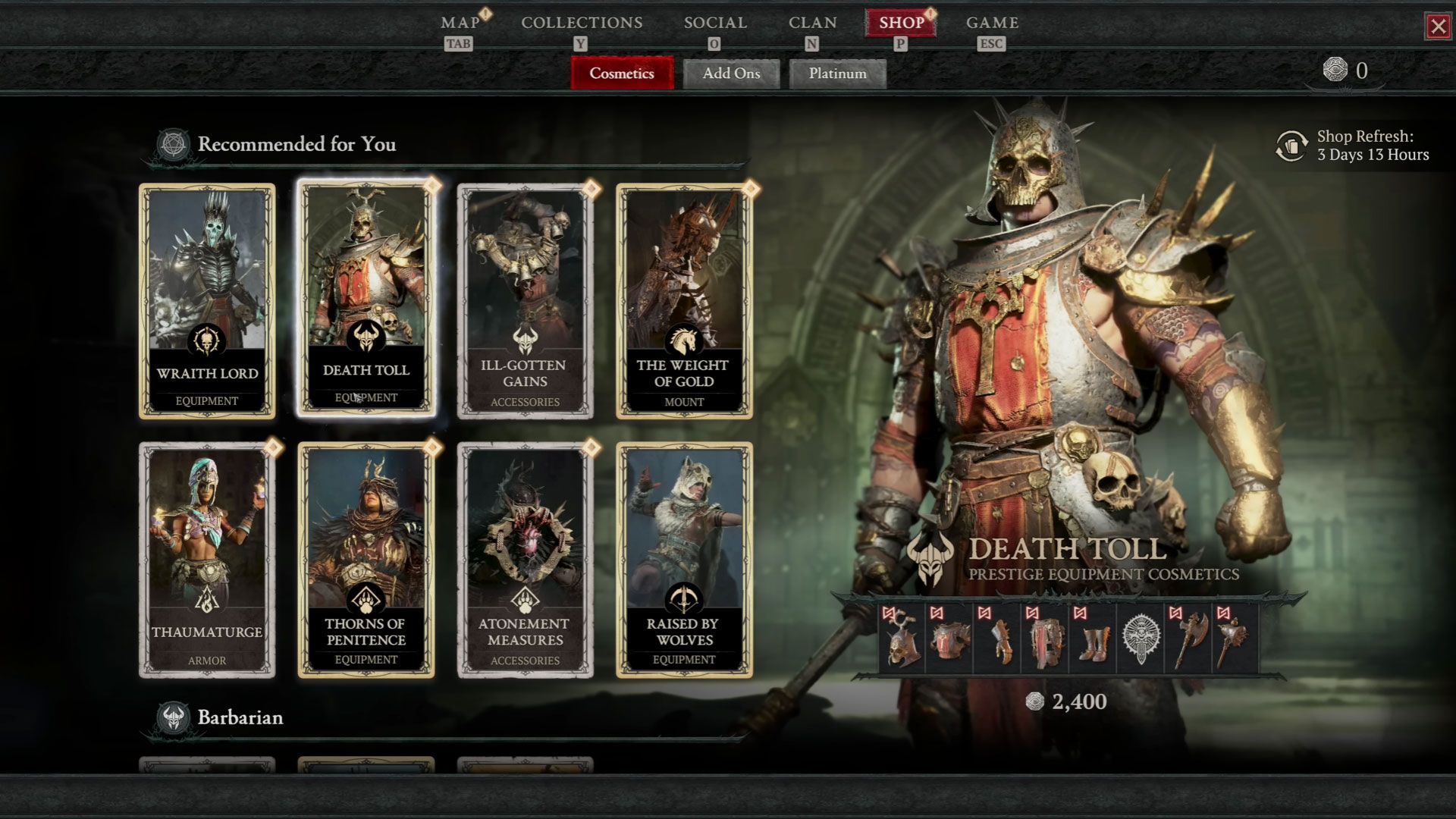
When you have enough shards, head to one of the extraction nodes, where there are usually a few stationed in each of the four corners of the PVP zones. The shards can be exchanged for red dust at the extraction point, which can be used by vendors selling cosmetics and gear.
Diablo IV has lots of options if you want to speed leveling your character's strength. It's no secret that Diablo IV is heavily monetized through the purchase of in-game bundles with real money. Prices for the Platinum plan start at $1.99 and go all the way to $99.99. Each dollar spent in the range of $1.99–$9.99 will get you 100 game currency.
You will receive additional currencies when you spend $24.99 on the game, in addition to the base 2500 currency. The bait behind these is obviously to get you to shell out the extra cash for the $99.99 package, which offers the most bonus currency.
The least expensive cosmetics, the Dressed To Kill set, cost 1300 in-game currency, while the most expensive, the Wraith Lord set, cost 2800. There's a wide range of possibilities, including a wide range of combinations with different cosmetics slots. You could also buy something called "Add Ons," which would equip you with new weapons, mounts, and so on.
I've personally never supported in-game monetization or spending real money to buy items in the game since you're already paying a high price for the game in the first place. Those taking part in different esports events or streaming for money will probably be the ideal customers.
Diablo IV has stunning visuals, making it one of the best-looking ARPG games of this time. The environment's verticality, together with the subtle touches like tracks in the snow, fire, and other spell effects, greatly enhance the game's realism. The voice acting, even from the most common NPC, is superb. There were a few problems with the game's performance, but no noticeable reductions in frame rate or anything.
I didn't experience any frame rate drop, even at maximum quality settings. Even though Blizzard said they couldn't do the stress test, there were likely performance issues on their end that led to rubber-banding and invisible walls. Even though that didn't happen often, the game stopped up on me a few times during boss fights, and that was enough to kill me.
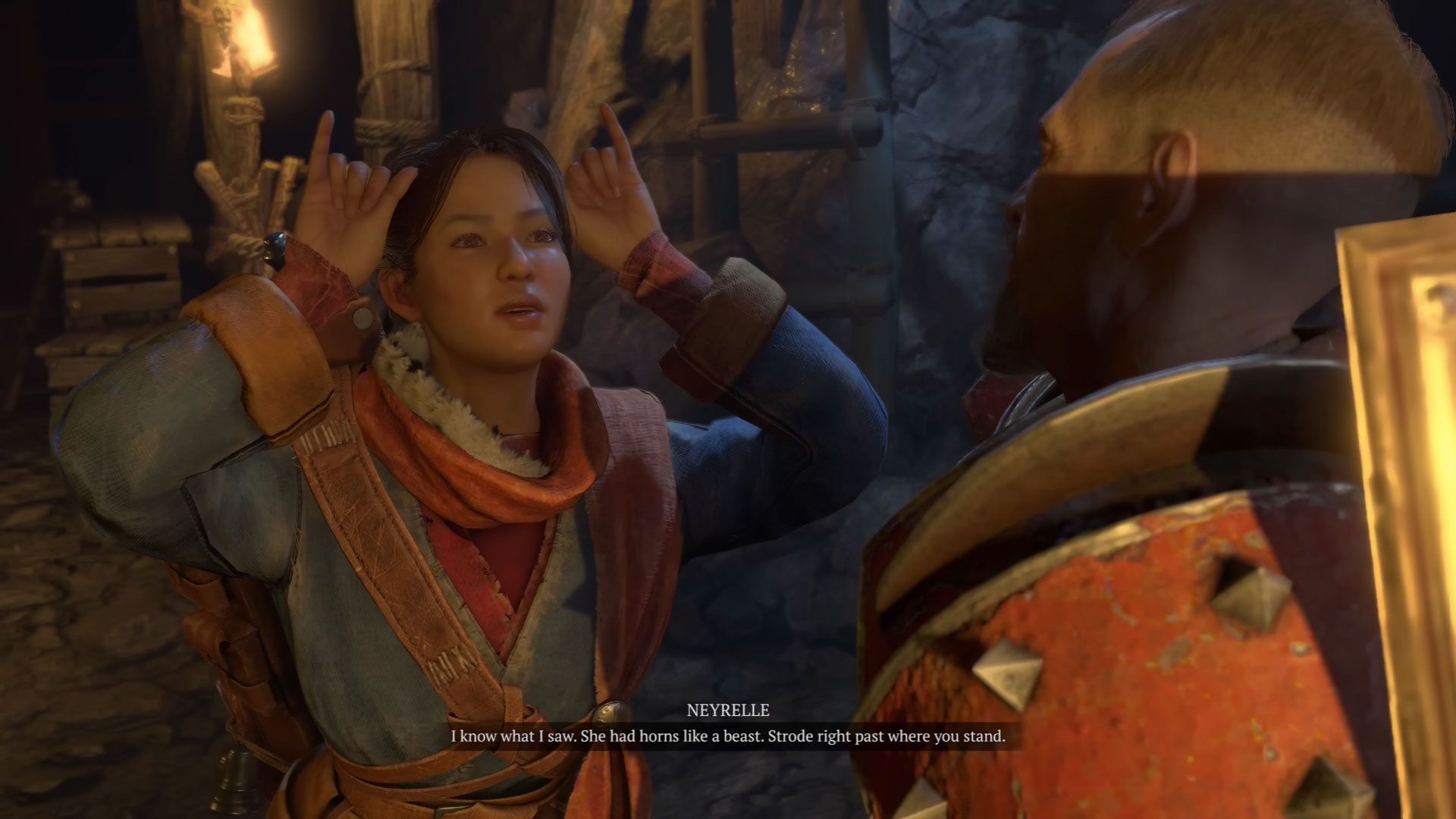
Diablo IV is a lot of fun if you're an ARPG fan, and the game's attention to detail will impress you. Having experienced both solo and PVP gameplay, I think everyone would benefit more from focusing on the solo until PVP has further improvements. It's great that the game can be played on multiple platforms and allows crossplay. The game is a good APRG as a whole, and the late-game material will keep you coming back for more.
Unlike previous Diablo games, it will attract players unfamiliar with the series. However, as stated earlier, the quality and popularity of that season's content will determine the show's long-term viability. Diablo IV's core content is good, but while I believe there's room for improvement and I wish Blizzard had taken some bigger strokes and tried some more original ideas, they still could have used some work.
Admin, NoobFeed
Verdict
The core content of Diablo IV is good, and there's a lot of fun if you're an ARPG fan. But there's still much room for further improvements. It's a good APRG as a whole, and the late-game material will keep you coming back for more.
75
Related News
No Data.

